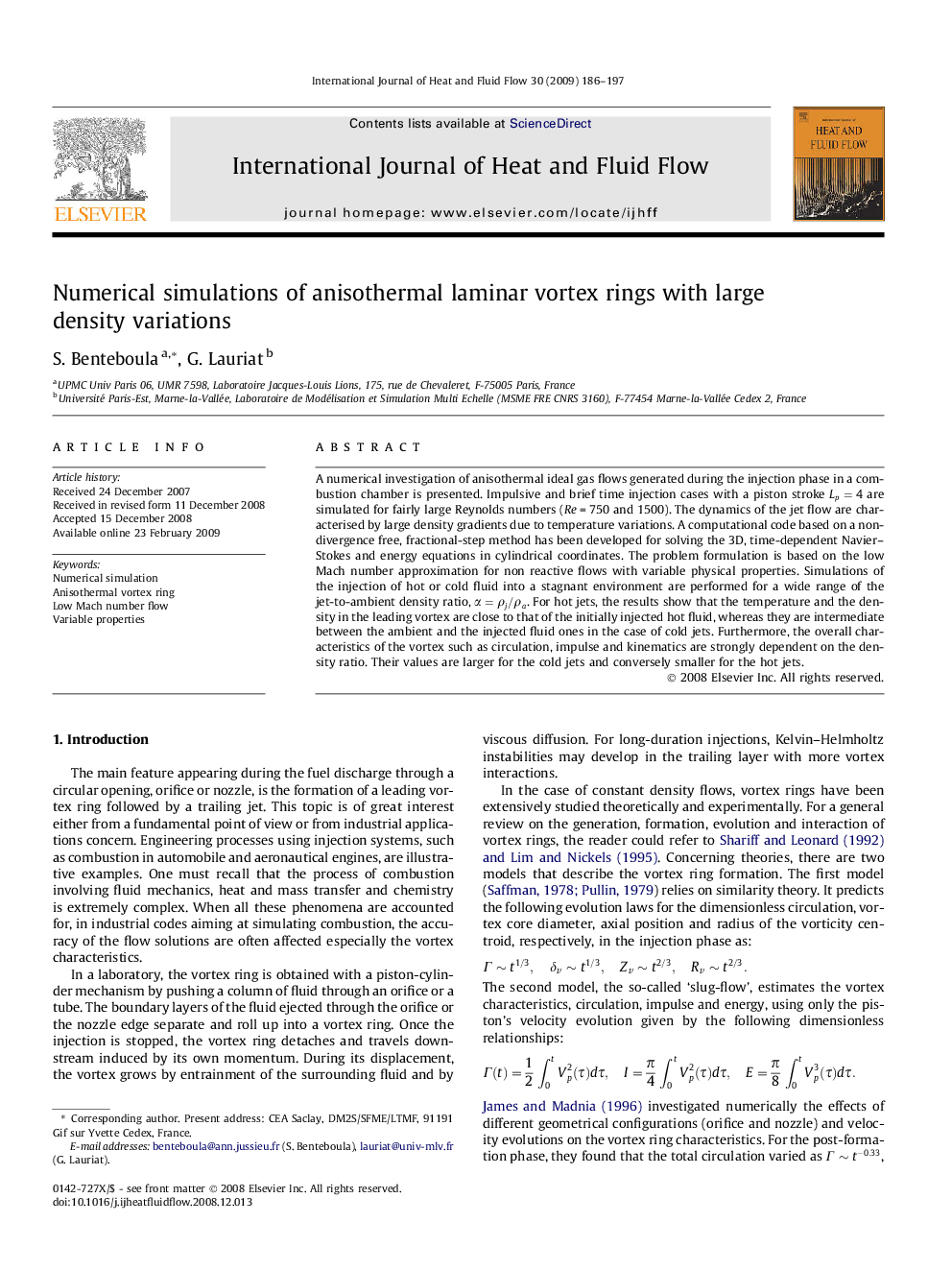| Article ID | Journal | Published Year | Pages | File Type |
|---|---|---|---|---|
| 655722 | International Journal of Heat and Fluid Flow | 2009 | 12 Pages |
A numerical investigation of anisothermal ideal gas flows generated during the injection phase in a combustion chamber is presented. Impulsive and brief time injection cases with a piston stroke Lp=4Lp=4 are simulated for fairly large Reynolds numbers (Re = 750 and 1500). The dynamics of the jet flow are characterised by large density gradients due to temperature variations. A computational code based on a non-divergence free, fractional-step method has been developed for solving the 3D, time-dependent Navier–Stokes and energy equations in cylindrical coordinates. The problem formulation is based on the low Mach number approximation for non reactive flows with variable physical properties. Simulations of the injection of hot or cold fluid into a stagnant environment are performed for a wide range of the jet-to-ambient density ratio, α=ρj/ρaα=ρj/ρa. For hot jets, the results show that the temperature and the density in the leading vortex are close to that of the initially injected hot fluid, whereas they are intermediate between the ambient and the injected fluid ones in the case of cold jets. Furthermore, the overall characteristics of the vortex such as circulation, impulse and kinematics are strongly dependent on the density ratio. Their values are larger for the cold jets and conversely smaller for the hot jets.
